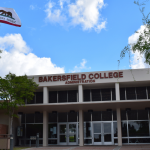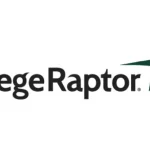AI technologies are impacting higher education in a number of ways: enabling institutions to automate routine tasks, providing 24/7/365 student support, driving enrollment, and improving engagement and student outcomes, all the while creating operational efficiencies that save staff time and money.
This final blog in our three-part series features three key sustainable growth strategies for expanding the reach of your institution’s AI-powered student engagement tools. These strategies prioritize benefits for students while conserving one of your most limited resources – staff time – and can be scaled to work within individual departments or across campus.
Quality Over Quantity
We’ve previously discussed the advantages of regularly monitoring user interactions to identify patterns in real-time communication, gaps in content coverage and other opportunities for growing your AI-powered knowledge base. To ensure that your AI’s robust analytics can help your institution improve student interaction, you need a solid plan for guiding your AI’s machine learning.
The most effective chatbots focus on addressing critical pain points, rather than attempting to address every possible question a student might ask. There are no prizes for adding the largest number of new questions and responses to a chatbot. In fact, adding content that is too vague (like one-word question/response combinations) or overly specific (including too much context or personal information) won’t be useful and will likely overwhelm the majority of students and may even weaken your AI’s effectiveness over time.
A solid strategy for tackling these less impactful chatbot interactions is to seek out patterns among them. Remedy these weak points by creating new content for topics that consistently appear across multiple interactions, including at different times and with different users. Focusing your energy in this way ensures that any new content you create is scalable and addresses real student needs. Since AI-powered tools need data to learn, feeding yours a steady diet of relevant user examples will increase its effectiveness and save your team valuable time.
Keeping Your Content “Evergreen”
So much that happens across campus – admission application, financial aid, billing deadlines, orientation, registration periods, housing move-in and move-out, term start/end dates, and graduation – is cyclical. Customizing evergreen content can save your team hours of repetitive work before the start of each new term or academic year. Using links in your underlying knowledge base to direct users to existing resources – such as your website – will streamline communication, make the most of your existing assets, and reduce the overall volume of information updates your team is responsible for overseeing. It also helps your students become more familiar with understanding and navigating the resources that are available to them while simultaneously reinforcing their credibility.
Scholarship data is an excellent example to support this approach. Many institutions award several different types of scholarships to their students. These scholarships have different names, different donors, different requirements, different deadlines, etc. Even your savviest users probably don’t know all of the information about all of your institution’s scholarship opportunities. Most are probably going to ask general questions about “scholarships” without providing the exact name of the award they’re asking about. They may be unaware there is more than one type of scholarship to begin with. Focusing your attention on creating robust, evergreen responses to a few general questions on “scholarships” will enable your AI-powered tools to learn and grow more quickly from scholarship-focused user interactions, and enable your team to prioritize students who have more complex issues. This is far more sustainable for you (and your AI) than generating many hyper-specific questions for each individual scholarship program.
Make a Plan to Expand
Relying on domains of expertise when delegating content management responsibilities will go a long way towards establishing the credibility of your institution’s AI tools among students, and towards making the maintenance of those tools sustainable over the long-term. Every office on campus often gets questions entirely outside of their purview. To provide the best possible user experience, your team needs a plan for addressing all of these inquiries, even those best answered by an office that might not yet be “online.”
If monitoring your user interactions uncovers a significant number of student inquiries that wouldn’t be well addressed by an existing functional area currently using your AI tools, it’s time to invite more subject matter experts to join your team. Their subject knowledge is a valuable means to achieve your team’s ultimate goal of getting the right information to your students when and how they need it, even if their department(s) are not currently using AI-powered communication tools to engage with students.
Identifying patterns through measuring student engagement outside of your current AI structure also provides strong supporting evidence for institutional leadership to consider expanding the tools’ usage campus-wide, further increasing opportunities for engagement at each and every point in the student life cycle. The sooner your full team is able to begin working together, the more productive the efforts of your collaboration will be, resulting in less duplication of effort, less content overlap and less conflicting information.
The Wrap
A sustainable AI platform relies on a well-designed plan of execution. This starts with efficiency. Being efficient will go a long way toward ensuring sustainability.
By keeping your institution’s unique student communication goals at the center of your AI growth strategy, your team will focus on the right priorities. Avoiding “time sinks” will ultimately make your communication tools more useful for your students, less cumbersome to sustain long-term and easier to adapt to additional departments or campus-wide.
As we have explored throughout this series, a “set it and forget it” approach to AI won’t help your institution leverage these powerful tools to their full potential. Creating an AI game plan, utilizing customization options effectively, and adopting trusted tactics for sustainable, scalable growth will limit additional work for busy front-line student service professionals while ensuring the students and families you serve receive the information and support they need 24/7/365.















